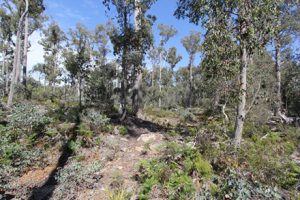Future national and state land and bushfire management policies need to clearly recognise the critical importance of the ‘plantation and native hardwood timber production sectors’ play as part of the overall solution in preventing wildfires like those of this past tragic Black Summer, according to Wood Products Victoria, (WPV). Source: Timberbiz
The WPV submission to the Royal Commission into National Natural Disaster Arrangements focuses strongly on the undeniable fact that that the ‘plantation softwood and native hardwood timber production sectors’ provide a crucial role in
- maintaining an efficient and cost-effective ground-based fire-fighting capability,
- providing local knowledgeable and experienced industry employees for bushfire mitigation and response activities, and
- providing regional forest and wood product industry worker jobs, regional community employment and a local valuable renewable and sustainable wood product supply to meet consumer demand.
WPV spokesperson, Dr Alastair Woodard, said that “the timber production sector has a significant collective level of unique and important skills, expertise and knowledge within its human resources, and the equipment (trucks, dozers, etc) that it utilises provides a substantial mechanised resource that can rapidly assist in first attack responses when fires start. These skills are called upon by state governments around Australia during bushfire events”.
Dr Woodard noted that it is well known to all those directly involved in fighting bushfires, of the enormous contribution that forest industry workers, play in fire mitigation and suppression, as well as post-fire clean-up; particularly ‘dangerous damaged tree removal’ which is high-risk and requires highly skilled tree-fellers to undertake this work safely.
“This fact though seems to be less appreciated by the public, and clearly some State Governments,” Dr Woodard said.
“The recent closure announcements in the native forest sector in Victoria (November 2019), certainly illustrates that the Andrews’ Government does not understand, or fails to recognise and appreciate, the value the native forest timber industry plays, and has always played, as a major contributor to the state’s capability to fight forest fires. The Government’s proposed planned closure of Victoria’s native forests for production, will not only take away from its own people access to the exquisite renewable sustainable, certified and locally produced hardwood products that they want and use, as importantly it will also reduce further the number of uniquely experienced and highly skilled workers who could assist in both regular fire management activities and bushfire response in the future; acting to protect Victoria’s natural public assets and its regional communities.”
The WPV submission also details the case for the following additional recommendations:
- That buildings in bushfire prone areas be designed in accordance with, and built in compliance with, the requirements of AS3959 Construction of buildings in bushfire-prone areas, For buildings constructed in accordance with AS 3959 there is no restriction on what structural timber products can be used for house framing or for internal joinery applications.
- That active, broadscale, holistic land management practices must be implemented. The forest ‘conservation-era’ principle of ‘lock it all up and leave it’, has now clearly been shown to have devasting negative outcomes and impacts on Australian communities and wildlife in bushfire events.
- That a nationally coordinated and state delivered bushfire policy and program needs to be introduced utilising a sustained and ongoing ‘whole of landscape’ approach to land management that recognises and acts to mitigate the increasing impacts of climate change.
- That increased expenditure and commitment is provided to off-fire season ‘preparation’ activities to assist in mitigating wildfires (including hazard reduction and road and track fire access maintenance) and a more equitable funding balance found with in-season emergency response ‘fire suppression’ activities to wildfires.
- That local fire management activities must be planned and administered at the community level, and where appropriate should include traditional low intensity burning practices undertaken in cooperation with local indigenous communities complementing existing prescribed burning programs but not replacing them.
- That adequately funded and ongoing hazard fuel reduction programs must be implemented, with an annual rolling target of 5% minimum of public land utilising both mechanical and burning methods, as recommended by the 2009 Victorian Bushfires Royal Commission.
- That hazard fuel reduction activities going forward need to be prioritised,
- firstly, creating appropriate buffers, around communities and key infrastructure (telecommunications, power lines, access roads), and then
- regular and sustained hazard fuel reduction activities working out from the community areas into more remote areas.
- That wood fibre taken from mechanical hazard fuel reduction activities (both high and low grade) be directed to and utilised in providing:
- locally manufactured products to supplement consumer demand for wood products,
- local renewable biomass energy generation (utilising hazard fuel reduction waste) assisting in reducing the local reliance on non-renewable energy sources.








